
I walked in to a Starbucks last night with the intention of getting some work done while sipping on a caramel latte the size of the tower of Babel. While waiting in line, there stood two gentlemen a couple of spaces ahead of me, conversing in American Sign Language (ASL). The one gentleman wore behind-the-ear hearing aids like mine while the other did not. I could tell the one wearing hearing aids was hard-of-hearing while the other was deaf and relied on ASL for communication. I admit to always being fascinated by ASL and trying to learn new signs.
I am currently limited to the few signs I teach my children such as “I’m sorry”, “thank you”, “you’re welcome”, “hungry”, “thirsty”, “good”, “boy”, “girl”, “sister”, “brother”, “mommy”, “daddy”, and most 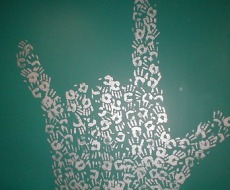 important, “I love you”. I sign “I love you” to them every morning before I leave to go to work. Their three little fingers up, waving in the window in show of affection for me, continue to melt my heart as I drive away for work every day. It makes my day, and I hope it sets their school days up for smiles the same way it does me.
important, “I love you”. I sign “I love you” to them every morning before I leave to go to work. Their three little fingers up, waving in the window in show of affection for me, continue to melt my heart as I drive away for work every day. It makes my day, and I hope it sets their school days up for smiles the same way it does me.
…As I bring my mind back to Starbucks, the sounds of the blaring CD and coffee beans whirling around in the grinder fill the air, and I yearn for the ability these gentlemen have to enjoy a perfectly communicated conversation without the interruptions of CD lyrics drowning out their own words.
What caught me off guard though was the lack of courtesy I noticed in a few young girls as they picked up their drinks and walked between the two gentlemen to walk out the door. The gentlemen casually brushed it off and continued with conversation and smiles.
I thought to myself, “If I was in a conversation with a friend and someone just walked through us without so much as a “Pardon me, please”, I would be a little miffed at their lack of courtesy. Why is it any different with someone speaking in sign?
I sat at a little table with my 1500 calorie latte and noticed I forgot something in the car. The same two gentlemen were sitting next to me. I signed “sorry” for interrupting them and asked the man who wore hearing aids if he could just watch my stuff for a second while I ran right outside to get something and come right back. When I came back in I signed “thank you” to both of them and they smiled. They taught me a few new signs and it just made my night.
Have you ever experienced something similar? What happened?
I think it is important to know a few basic words in ASL, but one that might be polite to learn is, “Excuse me”. Here is a three-second clip that demonstrates the simple sign. Now we can say we learned something new today.
PLEASE SHARE!
 Kiersten Troutman is the Manager of Marketing and Outreach at HEARINC in Canton, Ohio. As a wife and mother of four young children, one of her greatest joys in life is being able to hear her children laugh and say, “I love you.” She holds a Bachelor of Arts degree from Kent State University, and is finishing up her Master of Arts in Composition and Rhetoric from The University of Akron. She suffers severe hearing loss in her left, and mild to moderate in her right, from birth, and has a true appreciation for the audiological advances made in the assistive hearing device industry. She has a passion for helping others realize that hearing loss does not discriminate with age, and has a vision to educate the public on how quality of life can often be improved simply by taking advantage of the amazing technology available.
Kiersten Troutman is the Manager of Marketing and Outreach at HEARINC in Canton, Ohio. As a wife and mother of four young children, one of her greatest joys in life is being able to hear her children laugh and say, “I love you.” She holds a Bachelor of Arts degree from Kent State University, and is finishing up her Master of Arts in Composition and Rhetoric from The University of Akron. She suffers severe hearing loss in her left, and mild to moderate in her right, from birth, and has a true appreciation for the audiological advances made in the assistive hearing device industry. She has a passion for helping others realize that hearing loss does not discriminate with age, and has a vision to educate the public on how quality of life can often be improved simply by taking advantage of the amazing technology available.
HEARINC. Join the Conversation.
Copyright. Kiersten D. Troutman. 2015.



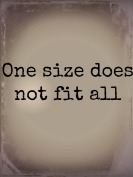 ly, hearing loss cannot be helped with a “one size fits all” device, just as reading glasses found at the drug store cannot be used for all vision instances. In the MarkeTrak VIII study by Dr. Sergei Kochkin, he writes that the Food and Drug Administration (FDA) did issue a guide to differentiate between simple sound amplifiers and true approved hearing aids. However, Dr. Eric Mann, the deputy director of the FDA’s Division of Ophthalmic, Neurological, and Ear, Nose, and Throat Devices, goes further to cite that in choosing a PSAP as a substitute over a custom hearing aid can actually “lead to more damage.”
ly, hearing loss cannot be helped with a “one size fits all” device, just as reading glasses found at the drug store cannot be used for all vision instances. In the MarkeTrak VIII study by Dr. Sergei Kochkin, he writes that the Food and Drug Administration (FDA) did issue a guide to differentiate between simple sound amplifiers and true approved hearing aids. However, Dr. Eric Mann, the deputy director of the FDA’s Division of Ophthalmic, Neurological, and Ear, Nose, and Throat Devices, goes further to cite that in choosing a PSAP as a substitute over a custom hearing aid can actually “lead to more damage.”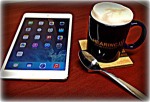
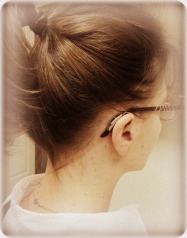 I began to think of writing on newer hearing technologies that many are unaware exist. Such technologies include the hearing streamer and the
I began to think of writing on newer hearing technologies that many are unaware exist. Such technologies include the hearing streamer and the 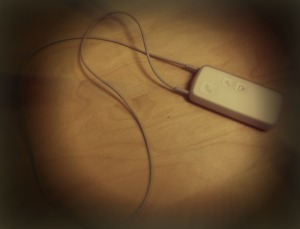
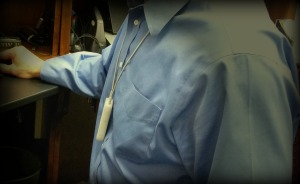
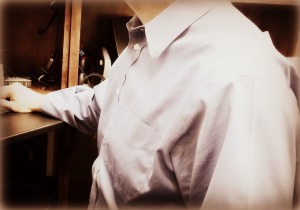
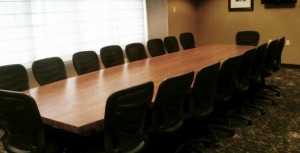
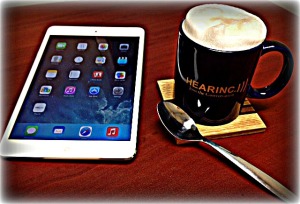



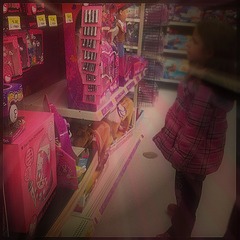

 The loud bustle of the espresso machines whirling at 3 AM in Starbucks for that Black Friday latte before fighting the maddening crowds is a little much for me these days. Maybe it’s because—with four young children—I’m just tired. All the time. BUT, do you remember growing up and getting excited to have a four-day weekend, of which included a day to sleep off all the gravy we ate the day before? What happened?
The loud bustle of the espresso machines whirling at 3 AM in Starbucks for that Black Friday latte before fighting the maddening crowds is a little much for me these days. Maybe it’s because—with four young children—I’m just tired. All the time. BUT, do you remember growing up and getting excited to have a four-day weekend, of which included a day to sleep off all the gravy we ate the day before? What happened? The sounds of Thanksgiving included the sound of the electric carving knife slicing the turkey to bits, while grandma laughed at the spectacle, licking gravy off her fingers as turkey bits flew. It was the blender whipping up homemade cream to top the hot pumpkin pie out of the oven. It was aunts laughing in the kitchen. Like gut-busting laughs. I couldn’t help but laugh with them even though I didn’t know what they were talking about. It was contagious. I still smile when I think about it.
The sounds of Thanksgiving included the sound of the electric carving knife slicing the turkey to bits, while grandma laughed at the spectacle, licking gravy off her fingers as turkey bits flew. It was the blender whipping up homemade cream to top the hot pumpkin pie out of the oven. It was aunts laughing in the kitchen. Like gut-busting laughs. I couldn’t help but laugh with them even though I didn’t know what they were talking about. It was contagious. I still smile when I think about it.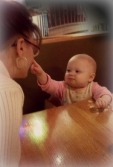 It was the sound of cards being dealt for a game of cards, or kids squealing when papa came in and tossed them higher and higher in the air. Or when he got the train out. Oh, how he loved trains.
It was the sound of cards being dealt for a game of cards, or kids squealing when papa came in and tossed them higher and higher in the air. Or when he got the train out. Oh, how he loved trains.
 Kiersten Troutman is the Manager of Marketing and Outreach at
Kiersten Troutman is the Manager of Marketing and Outreach at 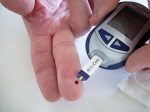
 ost of those with diabetes are unaware that there is also a link between diabetes and hearing loss.
ost of those with diabetes are unaware that there is also a link between diabetes and hearing loss.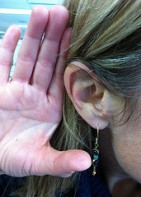
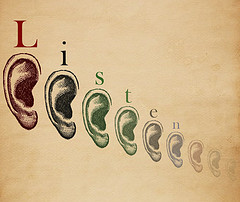 5 habits for healthier living for those with diabetes
5 habits for healthier living for those with diabetes Keep your blood sugar under control. Just as your heart, eye, and nerve health are affected by your blood sugar levels, your hearing health may be as well. Work with your doctor to monitor your blood sugar and take appropriate medicines as prescribed.
Keep your blood sugar under control. Just as your heart, eye, and nerve health are affected by your blood sugar levels, your hearing health may be as well. Work with your doctor to monitor your blood sugar and take appropriate medicines as prescribed. Kiersten Troutman is the Manager of Marketing and Outreach at
Kiersten Troutman is the Manager of Marketing and Outreach at 
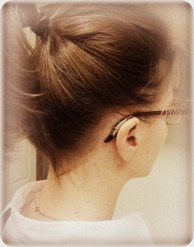

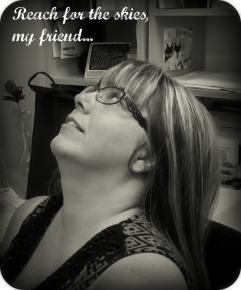


 not all keep Qtips in business? Cotton swabs can cause damage if pushed too far in the ear canal or pushed too far against the eardrum. Depending on the amount and consistency of wax, cotton swabs can actually clog the ear canal, reducing the effectiveness of hearing devices. Quite often hearing aid users think their devices have failed when in actuality, it was just a bad case of ear wax. Ask an audiologist for other recommended ways for cleaning ears.
not all keep Qtips in business? Cotton swabs can cause damage if pushed too far in the ear canal or pushed too far against the eardrum. Depending on the amount and consistency of wax, cotton swabs can actually clog the ear canal, reducing the effectiveness of hearing devices. Quite often hearing aid users think their devices have failed when in actuality, it was just a bad case of ear wax. Ask an audiologist for other recommended ways for cleaning ears. . No. Extremes in temperature can shorten the battery life. They should not get too hot or too cold. Ideally, they should be stored around 70 degrees Fahrenheit. Putting them in the butter tray of your refrigerator with the butter door closed, or in your sock drawer, can be two places where you they can be safely stored.
. No. Extremes in temperature can shorten the battery life. They should not get too hot or too cold. Ideally, they should be stored around 70 degrees Fahrenheit. Putting them in the butter tray of your refrigerator with the butter door closed, or in your sock drawer, can be two places where you they can be safely stored.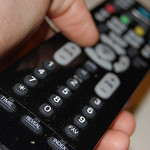
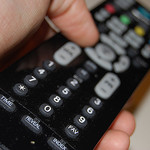






You must be logged in to post a comment.